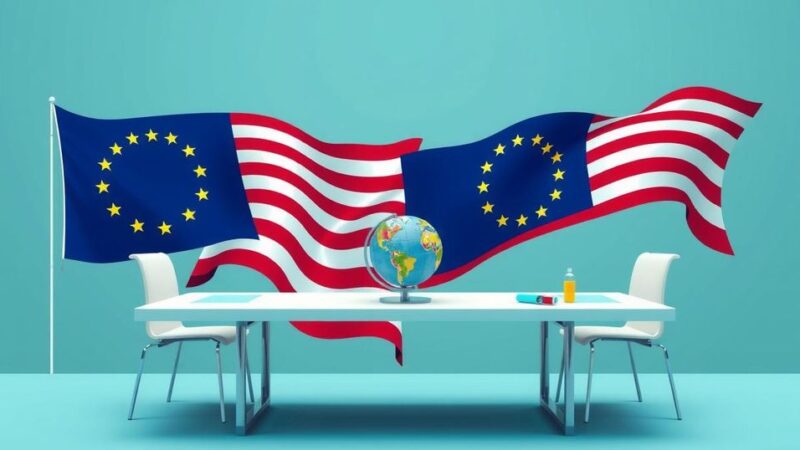Trump has declared a 25% tariff on imports from Canada and Mexico set to begin on February 1. This move is aimed at addressing substantial trade deficits and is part of his “America First” trade policy. The executive order calls for a thorough evaluation of trade agreements and policies, seeking to fortify U.S. economic security while addressing immigration and drug trafficking issues.
President Donald Trump announced a 25% tariff on imports from Canada and Mexico, set to take effect on February 1. This decision is part of his “America First” trade policy, which aims to address significant trade deficits with both countries, totaling over $150 billion with Mexico and $67 billion with Canada. The announcement signals a shift toward stricter trade regulations as Trump tasks his government to evaluate trade relationships and potential agreements by April.
During an Oval Office briefing, Trump expressed his reasoning for the tariffs, citing Canada and Mexico’s roles in allowing immigration and drug trafficking, particularly fentanyl. He remarked, “We are thinking in terms of 25% on Mexico and Canada because they are allowing vast numbers of people… Canada is a very bad abuser also.” This approach reflects a non-economic motivation focusing on immigration control rather than purely fiscal considerations.
Additionally, the executive order issued outlines a broader reassessment of U.S. trade policies, aiming to enhance the country’s economic and national security. Trump called for an investigation into the causes of persistent trade deficits and the implications they pose. The order emphasizes promoting American business interests while identifying unfair trade practices by other nations.
The Trump administration also aims to implement the External Revenue Service (ERS) for efficient tax and tariff collection. The treasury secretary is instructed to evaluate currency exchange rates with trading partners to counter manipulation, which may undermine fair competition. Furthermore, the order mandates the U.S. Trade Representative (USTR) to assess existing trade agreements and identify potential bilateral agreements for greater market access.
In terms of relations with China, Trump’s new directive includes scrutiny of compliance with trade agreements and potential tariff actions if violations are found. The order highlights the need for reciprocal treatment in areas like technology transfer and intellectual property rights. A comprehensive review will seek to ensure that the U.S. maintains its technological edge and addresses any loopholes in export controls.
Trump’s executive order signifies a significant pivot in U.S. trade policy, suggesting that while certain immediate actions may predominantly affect Canada and Mexico, the broader implications could reset international economic norms. By reinforcing strategic economic measures, the administration aims to fortify American industry and manufacturing against perceived threats from global trade practices.
Trump’s announcement of 25% tariffs on imports from Canada and Mexico marks a significant shift in U.S. trade policy aimed at addressing large trade deficits and immigration issues. The executive order outlined a comprehensive approach to reassessing trade agreements, currency manipulation, and unfair practices by foreign countries, particularly China. As the U.S. looks to tighten its trade stance, these measures could have lasting implications for the international economic landscape.
Original Source: www.hindustantimes.com






